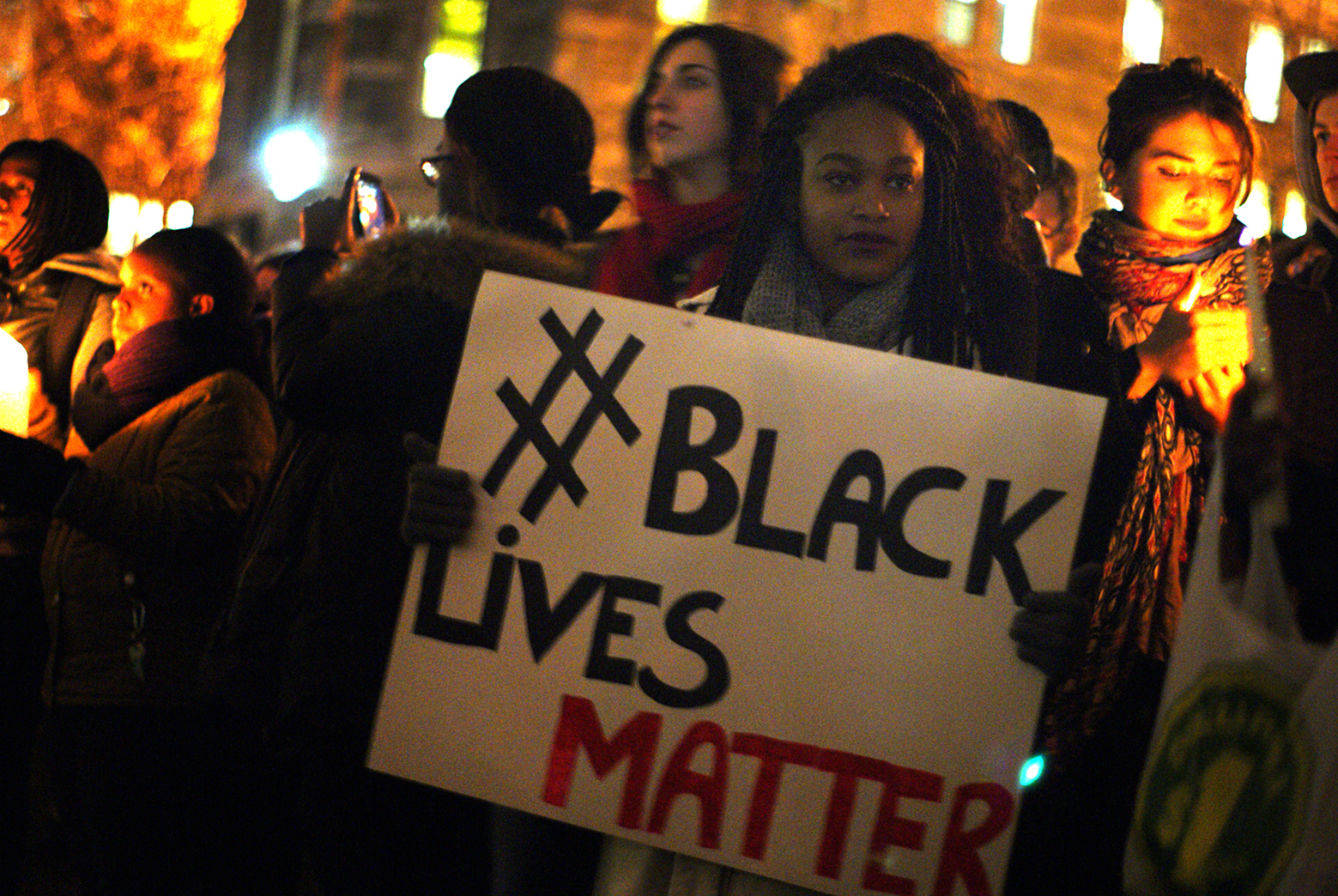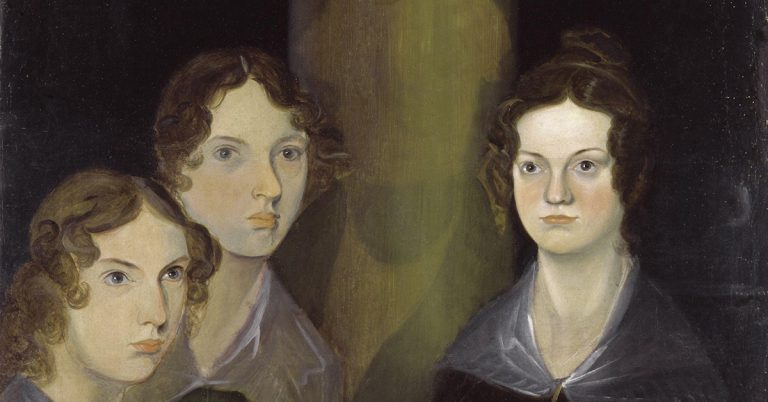
‘A future politics is given there so powerfully that it’s present as a trace even in certain reactions that, in the very force and determination of reaction, replicate horror’s preconditions…’
Fred Moten1
By foregrounding the experiences of slavery, a black radical tradition (in which I include include authors such as W.E. B Du Bois, Cedric Robinson, Angela Davis, Saidya Hartman and Fred Moten) urges us to acknowledge that the past is horrendously present in ‘here and now’. Recent movies such as Get Out (Peele, 2016) locate their politics in horror as a literary device. In making the viewers feel and see terror, narratives that centre on black bodies as commodities illuminate the legacies of the past. An aesthetic of showing terror is not accidental to this radical black tradition. While horror is at the heart of a history of anti-black violence, black performances have material effects. Fred Moten has argued that black and brown subjects struggle to run away from and abolish institutions which make domination possible, such as Jim Crow-like material conditions and the prison industrial complex. This struggle puts forward a demand that is never fulfilled, but we can escape by following black and brown people in their attempt to run away from whiteness2.
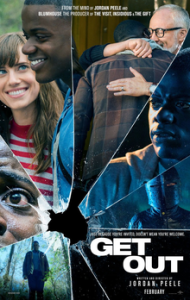
In Peele’s movie, the horror of being auctioned, terrorised and psychoanalysed leads to what Moten calls a ‘fugitive movement’3. The two main black characters, Chris and Rod, understand that the only response to white liberalism is to become a fugitive and run. When Rod tells a story about Chris being tortured and hunted, we know that what he says is both insane and true. It seems that the horror remains the only possibility for black fugitives to keep it real – or, in the words of Moten, to ‘tell a story after a rapture has broken the ability to tell’4. Being black and poor is a type of terror that haunts global racial capitalism, which wants to erase a material history of producing commodities out of black bodies. But we also know that blackness is stubborn and does not want to go away. To make us remember that, a black radical tradition shows that the past keeps repeating as an unspeakable present and black bodies are stolen again and again to further the project of white capitalism.
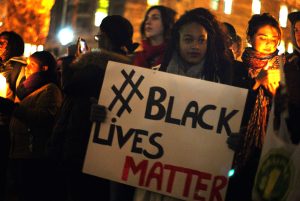
How we can wake up from our horror? Two moments in our global world might to point to a way out. In the Unites States, the Black Lives Matter Movement deployed rage to expose white capitalism. Adia Victoria’s song, Howlin’ shame, released in 2016 before the election of Donald Trump, made it clear that bruised and killed black bodies are the shame of racial capitalism. The artists of the movement told us that we need to talk about Emmett Till, Trayvon Martin, Sandra Bland, Tamir Rice and many others.
Yet white nationalists stole the rage of the movement and channelled it towards consolidating whiteness as a political global formation. Both white nationalists and liberals ask us to empathise with poor white workers instead, making them the real victims of capitalism according to their rhetoric. Donald Trump won because he literally became a white body performing and stealing rage. The anger is again and again blackfaced and concentrated towards reproducing the conditions that made life unbearable for an African diaspora population.
Black rage is appropriated not only in countries sharing a black Atlantic experience, but also in those whose sense of national identity emerged from the institution of slavery. For instance, the patriotism of Romanians is articulated as a response to the horror of being Roma. Like in the United States, white Romanians steal the rage of black bodies to increase the value of white bodies and property.
Take the highly circulated video of Floricica ‘the Dancer’, a Roma woman who angrily criticised the President at a political protest. In response, a new genre of memes and artistic commodities appeared as white Romanians shamed a black woman for breaking out of ‘the frame’5. As a fugitive, Floricica showed on her TV performance that she could break ‘the enclosure’ which the bodies of ex-slaves in Romania are relegated to6.
Can we wake up from this horror? Although black bodies are commodities, a new anti-racist politics is possible if black fugitives take the centre stage by speaking a language of rage which is hard to hear and translate in mainstream liberal codes. One becomes a fugitive when one unlearns the language and the logic of the global capitalists. As an example, sonic liberation is possible when the rules of the grammar move beyond the formal requirements of speaking a ‘proper’ language. In her improper ways, Floricica asked for a freedom that ‘any human being has a right to’7.

In Howlin’ shame, Adia Victoria sings:
We need to talk about Addie Mae,
I seen her walking out the other day,
And I been watching that girl wilt away,
Bruised back, blisterin’,
There ain’t no end to her sufferin’,
And any good she had is gone to gray.
Like Floricica’s language, Adia Victoria is moving us affectively when we feel the shameful destruction of Addie Mae’s body. Horror is a genre that could awaken, but we need to learn ways of doing and feeling that are not known in a white imagination.
 | By Bogdan PopaBogdan Popa is Visiting Assistant Professor of Politics at Oberlin College. He has been published in the Annual Review of Critical Psychology. He has contributed chapters to books including Cosmopolitanism and the Legacies of Dissent edited by Tamara Caraus and Camil Alexandru Parvu (Routledge, 2014). Shame is his first book. |
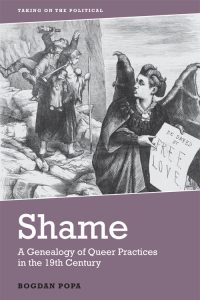 | ShameA Genealogy of Queer Practices in the 19th CenturyBogdan Popa |
1 Fred Moten, ‘Knowledge of Freedom’, CR: The New Centennial Review 4:2 (2004), p.278.
2 See in Fred Moten & Stefano Hearney, The Undercommons: Fugitive Planning and Black Study, New York: Minor Compositions, 2013.
3 See Fred Moten, ‘The Case of Blackness’, Criticism, Spring 2008, 50:2, p.179.
4 Moten, 2004, p. 278.
5 For modes of resistance against white frames, see Moten, 2004, 293.
6 See in The Undercommons where Moten and Harney talk about politics as the resistance to enclosure (18).
7 See Floricica’s statement: ‘Stop the meeting in Piața Victoriei, and from here… shame on you, every human being has the right to freedom, houa ‘ (my translation) (România TV, 5 February 2017).


